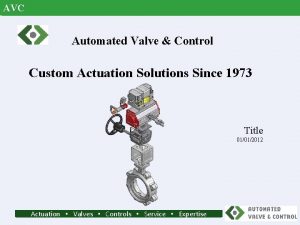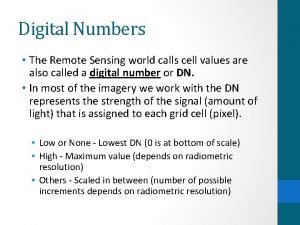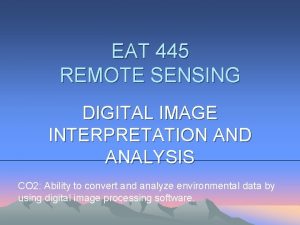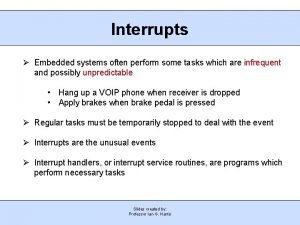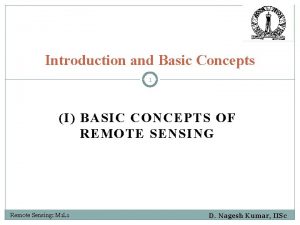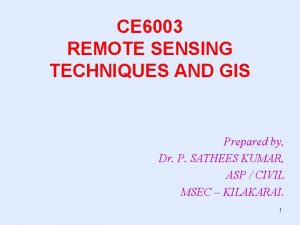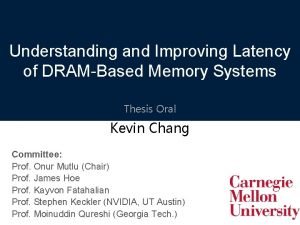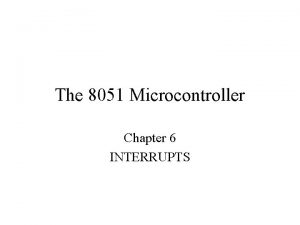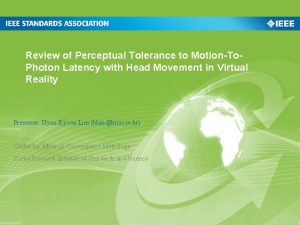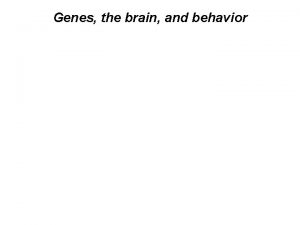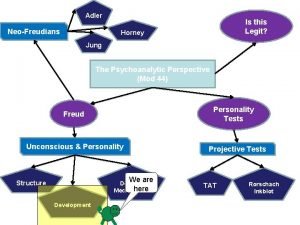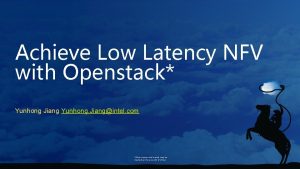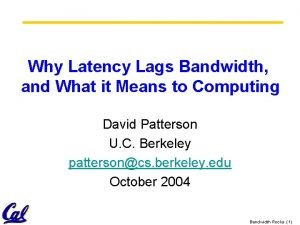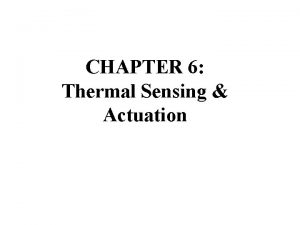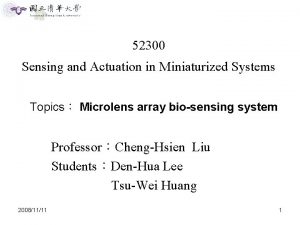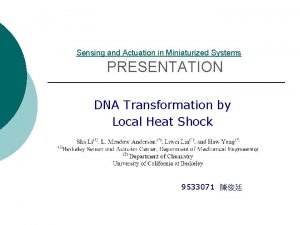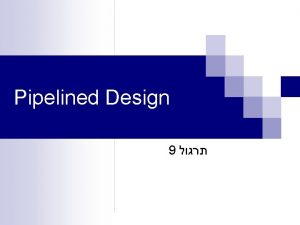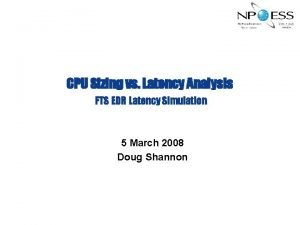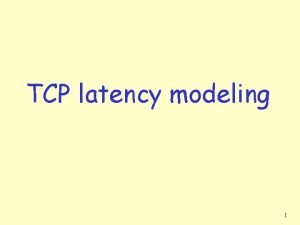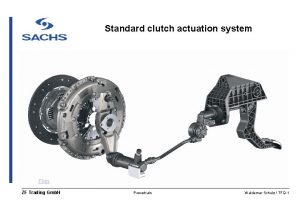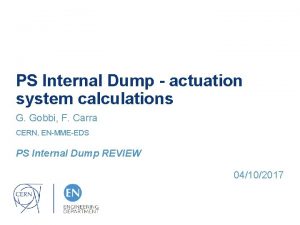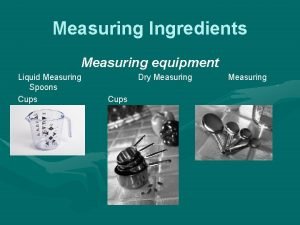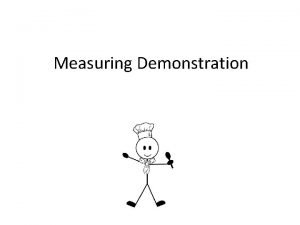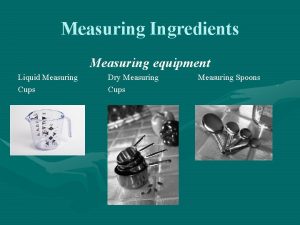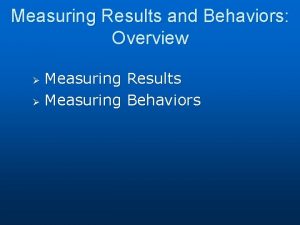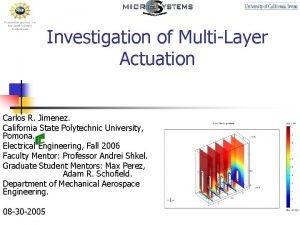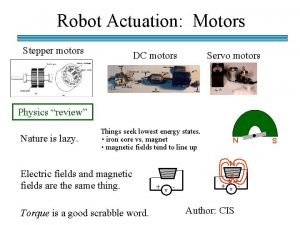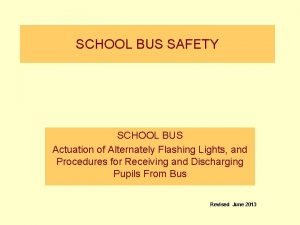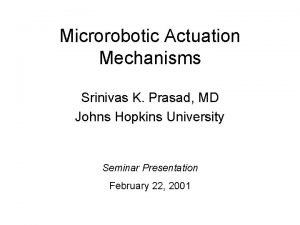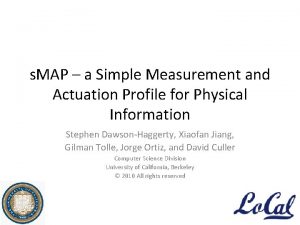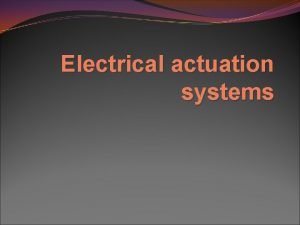Measuring Digital System Latency from Sensing to Actuation

























- Slides: 25

Measuring Digital System Latency from Sensing to Actuation at Continuous 1 ms Resolution Weixin Wu, Yujie Dong, Adam Hoover Dept. Electrical and Computer Engineering, Clemson University

What is system latency Delay from when an event is sensed to when the computer “does something” (actuates) Examples: camera to display; gyroscope to motor

Why do we care? Constant delay Time If delay is constant, human users can adapt, machine systems can be built to specification

What if it is not constant? Varying delay Time May have some relation to “simulator sickness”; machines have to be built with a lot more tolerance for variability in delay

How do we measure it? Components use asynchronous clocks; computer timestamps do not include sensing/actuation times or variability in buffers unmeasured Timestamp

Indirect system latency measurement • Outside observer • Measure when the property being sensed/actuated are same • Example: marker position in “real world” matches marker position in “display”

Previous works (camera based) Actuator Sensor Outside observer • Bryson & Fisher (1990) • He, et. al. (2000) • Liang, Shaw & Green (1991) • Ware and Balakrishan (1994) • Steed (2008) • Morice et. al. (2008)

Previous works (event based) Outside observer • Mine (1993) • Akatsuka & Bekey (2006) • Olano et. al. (1995) • Morice et. al. (2008) • Teather et. al. (2009)

Why measure continuously? Time Measure: Average infrequent or irregular measurements

Continuous measurement • Outside observer is high speed camera • Can capture 480 x 640 image resolution at 1, 000 Hz for up to 4 seconds

Experiment 1: camera to display

Sensor, object in “real world” • Bar is manually moved right to left in about 1 second

As seen by outside observer • Bar position in display lags behind bar position in real world

Automated image processing • Calculate P=(X-L)/(R-L) for both events

Continuous latency measurement • Plot Ps and Pa for each high speed camera frame

Result frequency magnitude • Delay varies with 17 Hz oscillation, 10 -20 ms magnitude

Result • Histograms, or averages, do not provide the whole picture

Modeling the variability • The histogram of delay is uniform but NOT random

Experiment 2: gyroscope to motor

As seen by the outside observer • Bar on motor lags behind bar being manually rotated

Automated image processing • Calculate theta for both events (relative to initial theta)

Result • Similar high frequency/magnitude variability as in experiment 1

Result • Lines are not parallel – lower frequency variability • Changes every trial, due to varying sensor error

Fitting sinusoid to low frequency • Two examples: • Ten trials of 50 degree rotation in 800 ms: • 0. 5 -1. 0 Hz variability in delay, magnitude 20 -100 ms • Seven trials of 10 degree rotation in 800 ms: • 0. 5 -1. 0 Hz variability in delay, magnitude 20 -100 ms

Conclusion Measuring delay continuously at 1 ms resolution shows interesting variations in latency Relation to simulator sickness? Next experiments: control latency variability, test its effect on people
 Finger cam actuation formula
Finger cam actuation formula Custom actuation
Custom actuation Digital number remote sensing
Digital number remote sensing Digital interpretation in remote sensing
Digital interpretation in remote sensing Interrupt latency in embedded system
Interrupt latency in embedded system Advantages of remote sensing
Advantages of remote sensing Idealized remote sensing system
Idealized remote sensing system Slack vs unify circuit
Slack vs unify circuit Improve memory latency
Improve memory latency Interrupt in 8051 microcontroller
Interrupt in 8051 microcontroller Latency stage
Latency stage Motion-to-photon latency
Motion-to-photon latency Phallic phase
Phallic phase Object storage latency
Object storage latency Network throughput formula
Network throughput formula Cmaf low latency
Cmaf low latency Hdfs latency
Hdfs latency Reduced rem latency
Reduced rem latency Psycho-sexual theory
Psycho-sexual theory Psychosexual
Psychosexual Psychosexual theory
Psychosexual theory Latency in computer architecture
Latency in computer architecture Oedipus complex which stage
Oedipus complex which stage Nfv
Nfv Air link latency
Air link latency Modern newfangled 6 3
Modern newfangled 6 3

